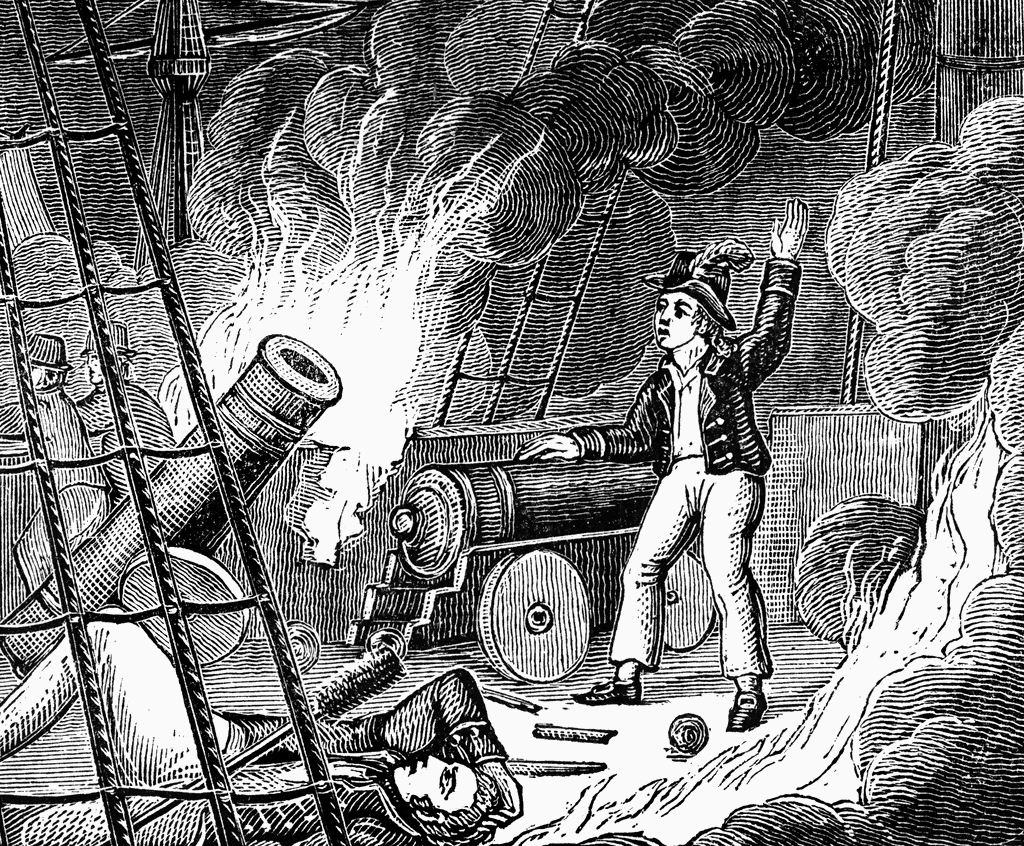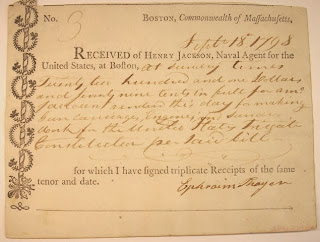USS Constitution‘s surgeon, Amos Evans, put it best when he wrote, “The cry of fire is dreadful on shore, but ten thousand times more distressing on board a powder ship at sea.”

U.S. Navy leadership took the ever-present threat of fire seriously, and from the beginning wished to provide fire-fighting equipment for each of the first frigates. As early as November 1794, Commissioner of the Revenue Tench Coxe began to pester Secretary of War James McHenry for fire engine specifications. It took two months before McHenry addressed the issue by requesting Naval Constructor Joshua Humphreys to transmit the ideal dimensions for the engines to Coxe.
At the beginning of February 1795, Humphreys obliged. He proposed that the boxes or cisterns of the engine be five feet long, two feet wide, and 18 or 20 inches deep. The chamber would be six inches in diameter with pistons of composition metal. They would come complete with 50 feet of leather hose and a 30 foot long suction pipe for drawing seawater from alongside the ship. The common land-based fire engines used in towns of the time were too bulky for ship board use, so Humphreys suggested a few modifications. “The levers of these Engines should be so constructed as to open in such a manner as to admit a number of men to work the engine & to fold up into a small compass when she is to be stowed away. Every fastening of the box and every other part of the Engine should be of copper or other metal that will not corrode with the sea water.”
Here the matter rested until 1797. As the first three frigates neared completion, Tench Francis, Purveyor of Public Supplies, let contracts for the fire engines to manufacturers in Philadelphia, but not one of them was able to deliver on time. Captain Samuel Nicholson, superintending USS Constitution’s construction in Boston, suggested that the engines for his frigate be procured from a Mr. Thayer in Boston. As an endorsement, he claimed Thayer made “the best Fire Engines in America, and on the simplest principles.”
Mr. Thayer was Ephraim Thayer of Boston. A former apprentice of Paul Revere and an ardent Federalist, Thayer had started making fire engines as early as 1793. These first engines have been designated “hand tubs” by collectors because they were typically hand drawn and hand fed with buckets. The pumping handles make them look like the old railroad hand cars. By pumping the handles up and down, the operators drove the pistons to produce enough pressure to shoot water to astonishing heights. Surprisingly, a relatively large number of Thayer’s products still survive. The Boston Fire Museum owns what is purported to be his first engine, a 1793 hand tub designated West Boston No. 6. Henry Ford owned another, and the Old Plaza Fire House in Los Angeles has one.

Thayer’s engines performed well. The first recorded instance of their use comes from the April 4, 1799 entry in Constitution’s log: “In chace the air light and variable Tackd as necessary to work to windward employd wetting the Sails with firemen and Engines.” Wetting the sails caused the hemp or flax fibers to swell. This reduced their porosity and, it was believed, improved their chances of catching light breezes.
The Author(s)
Matthew Brenckle
Research Historian, USS Constitution Museum
Matthew Brenckle was the Research Historian at the USS Constitution Museum from 2006 to 2016.